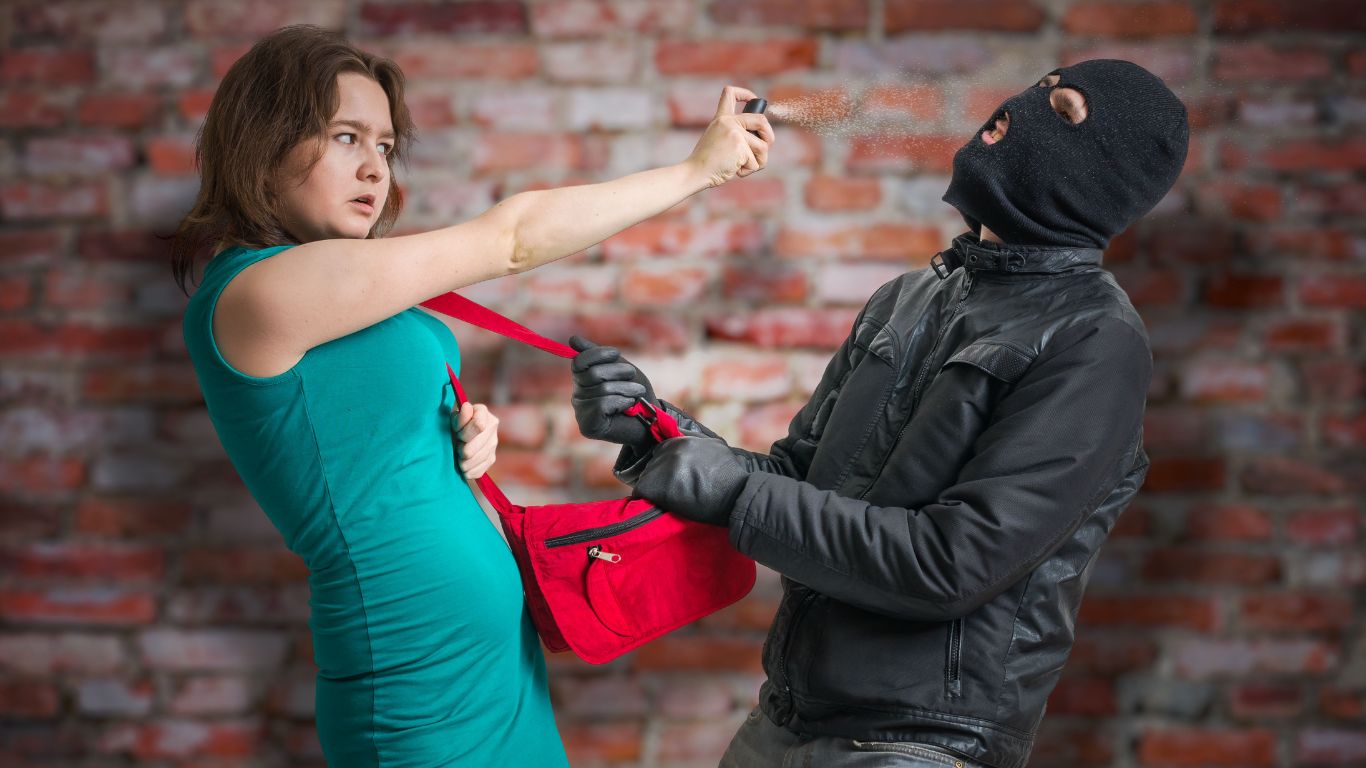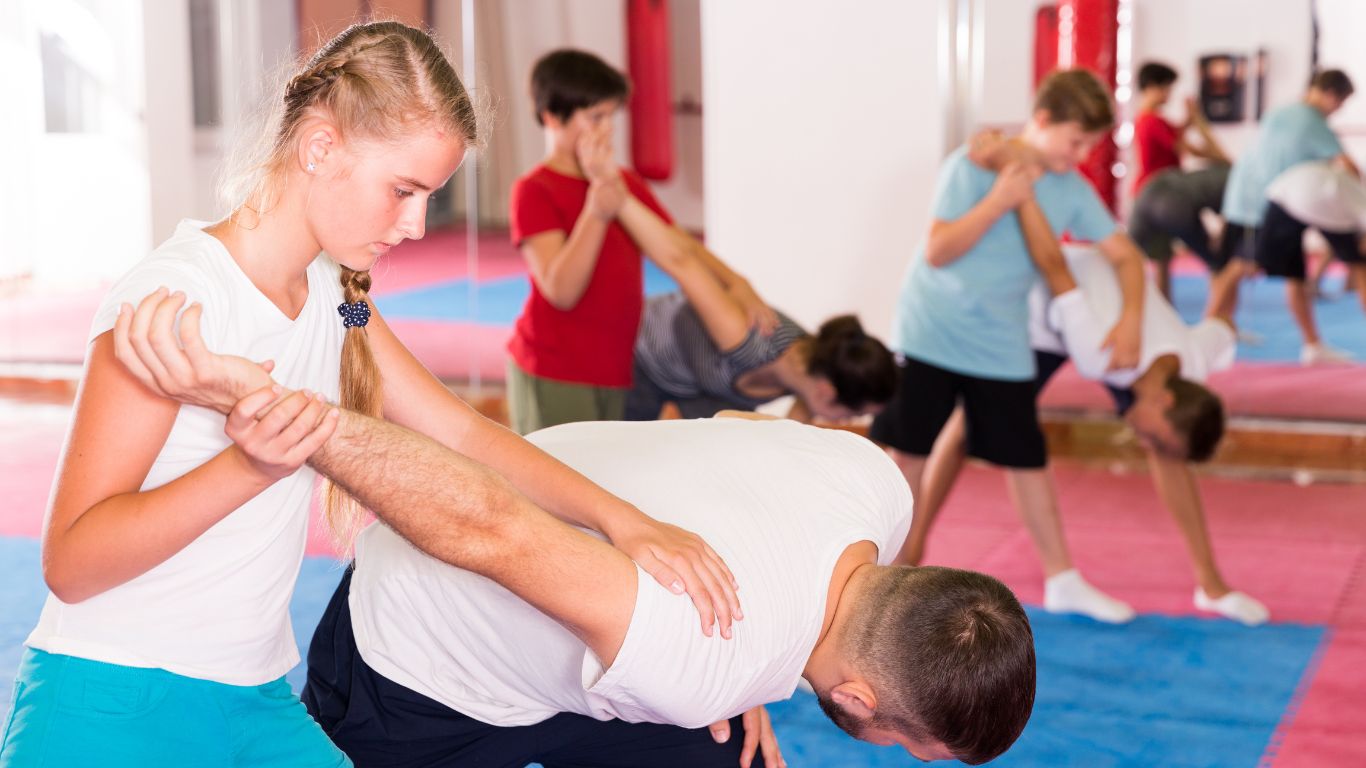Key Takeaways
Self-defense is not just about physical techniques; it’s about understanding the psychology, legal aspects, and situational awareness that can keep you safe.
Effective self-defense techniques are often simple and easy to remember, making them accessible to everyone.
Recognizing and avoiding dangerous situations can be the most effective way to stay safe.
Physical conditioning, including strength, stamina, flexibility, and cardiovascular fitness, plays a crucial role in self-defense.
Self-defense is for everyone, regardless of age or gender. Specialized training and techniques are available to cater to specific needs.
Welcome to the world of self-defense, where your safety and well-being take center stage.
In this comprehensive guide, we will explore the art of self-defense, empowering you with the knowledge and skills to protect yourself and those you care about.
Table of Contents
Understanding Self-Defense
Defining Self-Defense
Before delving into the techniques and strategies of self-defense, it’s essential to understand what self-defense truly means.
Self-defense refers to the measures taken to protect oneself from harm or danger. It’s a fundamental human right, and mastering it can make a significant difference in your life.
The Psychology of Self-Defense
Self-defense isn’t just about physical skills; it also involves understanding the psychology behind it. Knowing how to read situations, assess threats, and respond appropriately is crucial. This knowledge can be your greatest weapon.
Legal Considerations
While self-defense is a right, it comes with legal responsibilities. It’s vital to be aware of the legal implications of your actions when defending yourself.
We’ll discuss the legal aspects in detail to keep you on the right side of the law.
Mental Preparedness
- Maintaining Awareness: Being aware of your surroundings is the first line of defense. We’ll explore techniques to enhance your situational awareness, helping you spot potential threats before they escalate.
- Trusting Your Instincts: Intuition can be a powerful tool in self-defense. Learn to trust your gut feelings and instincts, which can guide you in making the right decisions under pressure.
- Staying Calm Under Pressure: In high-stress situations, staying calm is paramount. We’ll provide tips and tricks to keep your composure when faced with danger.
Basic Self-Defense Techniques
The Importance of Simplicity
Effective self-defense techniques are often simple and easy to remember. We’ll cover basic moves that can get you out of dangerous situations.
The Stance and Posture
Your posture and stance play a significant role in self-defense. Discover the right positions that can make you a more formidable opponent.
Effective Striking Techniques
Master the art of striking, including palm heel strikes, knee strikes, and groin strikes, to incapacitate your attacker.
- Palm Heel Strike: Learn how to execute a palm heel strike, a versatile move that can disorient an attacker.
- Knee Strikes: Knee strikes can be a game-changer in close combat. Find out how to use them effectively.
- Groin Strikes: One of the most vulnerable areas for attackers is the groin. Discover how to exploit this weakness for self-defense.
Escaping Grabs and Holds
In situations where someone tries to restrain you, knowing how to break free is essential.
- Wrist Escapes: Escape from wrist grabs with ease using the techniques we’ll share.
- Chokehold Defense: Learn how to defend against chokeholds, a dangerous situation that requires swift action.
Defensive Tools
Pepper Spray and Self-Defense Sprays
Sometimes, carrying self-defense tools can provide an extra layer of security. We’ll discuss the proper use of pepper spray and self-defense sprays.

Personal Alarms
Personal alarms serve as a deterrent to potential attackers by creating a loud and attention-grabbing noise when activated. This noise can startle and discourage assailants.
Personal alarms not only deter attackers but also draw attention to your situation, alerting bystanders or authorities to your distress. They act as a valuable tool to call for help in emergency situations, enhancing your personal safety.
Tactical Flashlights
A flashlight can be more than just a source of light. Learn how to use tactical flashlights for self-defense.
Physical Conditioning
- Building Strength and Stamina: Physical fitness is a cornerstone of self-defense. Discover exercises to build strength and stamina, enhancing your ability to protect yourself.
- Flexibility and Mobility Exercises: Flexibility and mobility are essential for swift movements in self-defense. We’ll cover exercises to keep you agile.
- Cardiovascular Fitness: Endurance is crucial in self-defense situations. We’ll guide you through cardio workouts to improve your staying power.
Training for Self-Defense
Martial Arts and Self-Defense Classes
Enrolling in self-defense classes or martial arts training can sharpen your skills. Learn where to find the right classes and what to expect.

Role-Playing and Scenario Training
- Regular practice, especially through role-playing and scenario training, is essential for improving self-defense skills.
- These training methods help individuals prepare both mentally and physically to respond effectively to real-life threats.
Partner Drills
Training with a partner can be highly beneficial. Discover partner drills to improve your self-defense techniques.
Avoidance and De-Escalation
- Recognizing Dangerous Situations: The best way to stay safe is to avoid dangerous situations altogether. Learn how to recognize potential threats and steer clear of them.
- Verbal De-Escalation Techniques: Words can be a powerful weapon in de-escalating confrontations. Explore verbal techniques to defuse tense situations.
- Creating Personal Boundaries: Establishing personal boundaries is a key aspect of self-defense. We’ll guide you in setting and enforcing boundaries effectively.
Self-Defense for Special Populations
Skill and Confidence Building: Self-defense for individuals with autism aims to equip them with the skills and confidence necessary to navigate challenging situations safely. This includes teaching techniques that are adapted to their unique needs, enhancing their ability to respond effectively.
Inclusive and Supportive Approach: The specialized training for autism populations not only focuses on physical techniques but also emphasizes clear communication and sensory awareness. Additionally, it fosters a supportive and inclusive environment, promoting self-reliance and personal safety within a community that understands and accommodates their specific abilities and challenges.
Self-Defense for Women
- Women’s Self-Defense Classes: Empowerment through self-defense is particularly important for women. Discover specialized classes tailored to women’s needs.
- Strategies for Female Self-Defense: We’ll discuss specific strategies and techniques that women can use to protect themselves effectively.
Self-Defense for Seniors
- Adaptations for Senior Citizens: Self-defense isn’t limited by age. Find out how senior citizens can adapt and stay safe.
- Maintaining Independence: Maintaining independence is a top priority for seniors. We’ll provide tips on self-defense to support this goal.
In conclusion, self-defense is not a skill reserved for the few but a fundamental right and an essential life skill for all. By mastering the techniques and strategies outlined in this guide, you’ll be better prepared to protect yourself and others in potentially dangerous situations.
Now that you’ve equipped yourself with this knowledge, remember that practice and awareness are the keys to effective self-defense. Stay safe, stay vigilant, and never underestimate the power of being prepared.
FAQs
What is self-defense?
Self-defense refers to measures taken to protect oneself from harm or danger, encompassing both physical techniques and mental strategies.
Are there legal considerations in self-defense?
Yes, there are legal aspects to self-defense. It’s essential to understand the laws related to self-defense in your jurisdiction to ensure you act within the boundaries of the law.
What are some basic self-defense techniques?
Basic self-defense techniques include simple yet effective moves, such as striking techniques, stance and posture, and escaping grabs and holds.
How can I improve my situational awareness?
You can enhance situational awareness by maintaining awareness of your surroundings, trusting your instincts, and staying calm under pressure.
Is self-defense suitable for all ages and genders?
Yes, self-defense is for everyone. Specialized training and techniques are available to cater to the needs of various age groups and genders, empowering individuals to protect themselves effectively.


